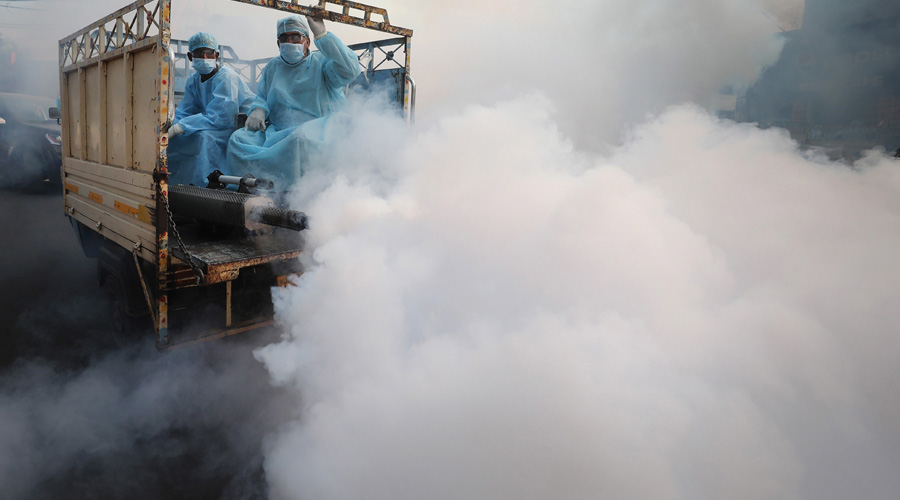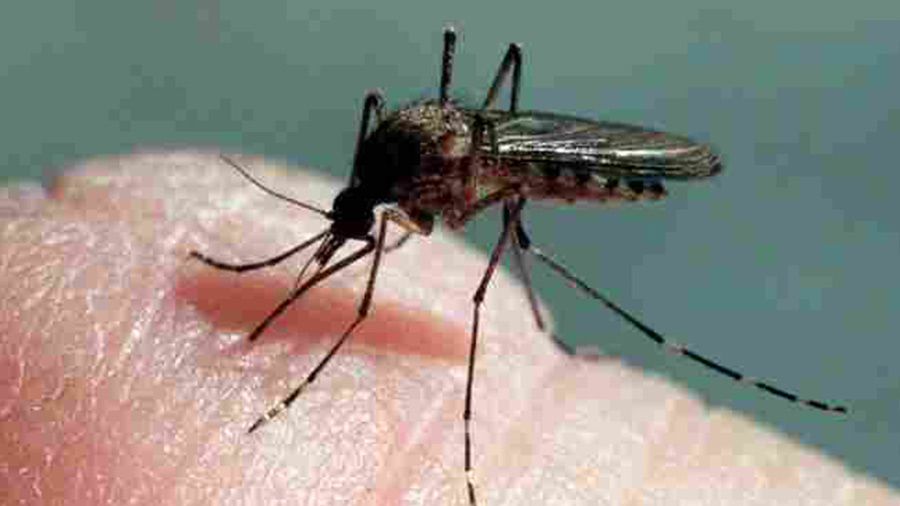Vacant plots, stagnant pools of water and clogged canals, along with irregular vector control work, have turned pockets of Tollygunge and Kasba in south Kolkata into dengue hotbeds.
Borough XII, which covers parts of Kasba, Jadavpur and Patuli, has reported the highest number of dengue infections in the city, said officials of Kolkata Municipal Corporation (KMC).
The Haltu-Rajdanga-Kayasthapara belt of Kasba and Patuli is the worst-hit, said an official.
A report prepared by the KMC has shown that Ward 106 has reported the highest number of dengue cases — 43 — among all 144 wards this year.
Two residents of the ward died of dengue last week. Rajdanga School Road, in the adjacent Ward 107, has also reported multiple cases. Some distance away, Phulbagan in Ward 101, which covers Patuli, is also badly affected.
“These areas have many vacant plots where waste piles up. Besides, people living along canals throw waste on the banks. All these create ideal conditions for mosquitoes to breed,” said deputy mayor Atin Ghosh, who also heads the KMC’s health department.
In the garbage dumped on vacant plots are many small containers like cups and pots, which turn into mosquito breeding sites once water accumulates in them.
The Aedes aegypti mosquito, which spreads the dengue virus, can lay eggs even in a spoonful of water.
Canals, too, can turn into mosquito breeding grounds if waste dumped on the banks enters the water and block the flow.
Arijit Das Thakur, councillor of Ward 106, said the CC1 canal was in bad state because of rampant disposal of waste on the banks.
Many residents questioned why the KMC did not act before and let the situation turn so grim.
They said if vector-control work was undertaken properly since the start of the monsoon, or even from before, the mosquito breeding sites on vacant plots or canal banks could have been spotted and destroyed in time.
Residents from the across the city have told The Telegraph that KMC vector-control teams visit their localities once in 15 or 20 days. Such visits should happen at least once a week to have any impact on the mosquito population.
“The KMC should have taken steps much earlier to ensure that the vacant plots did not turn into mosquito breeding grounds,” said a resident of Rajdanga.
A KMC official said it was difficult to track down the owners of many vacant plots, because of which the properties could not be cleaned.
The KMC was hesitant about entering private properties, he said. It has now been decided that such properties will be cleaned by the KMC.
“The KMC has been saying for some years now that it would clean vacant plots and recover the cost from the owner, if the owner fails to clean the property. Why didn’t they take this step earlier?” asked a resident.
A resident of P Majumdar Road in Kasba asked why the KMC did not impose any fine on owners of properties where mosquito larvae were found even after being told to keep their properties clean.
A KMC official said no one had been fined this year. Senior officials of the KMC’s health department toured Borough XII on Tuesday to find out why dengue infections were spreading fast.
Sushanta Ghosh, chairperson of Borough XII, said the pockets in Wards 105, 106 and 107 that were worst affected were adjoining areas.

